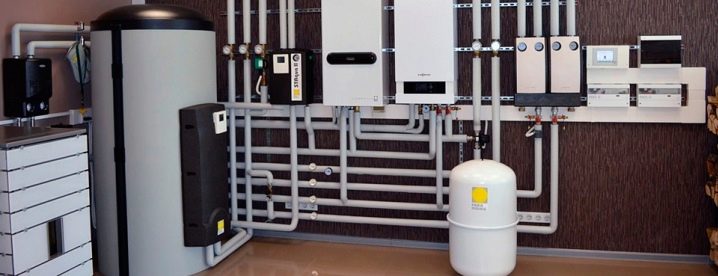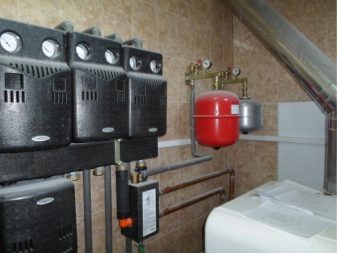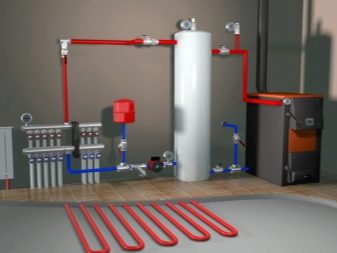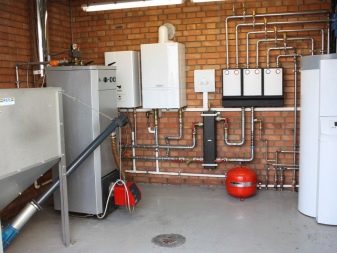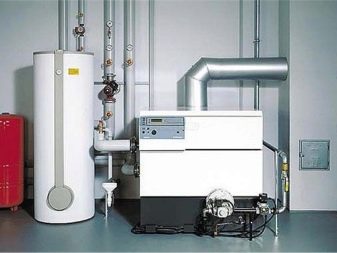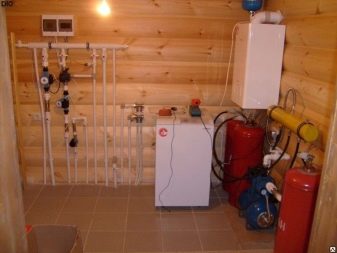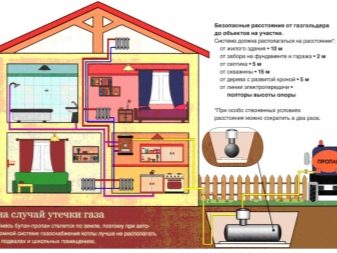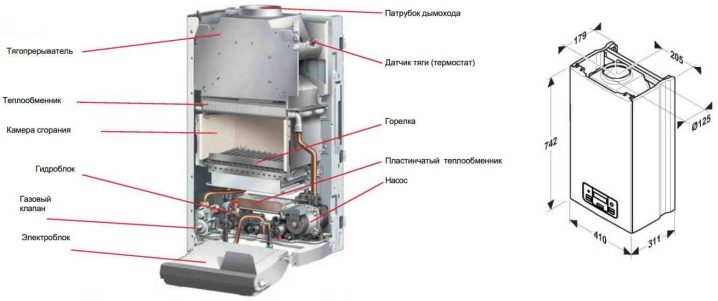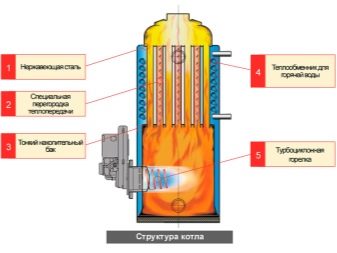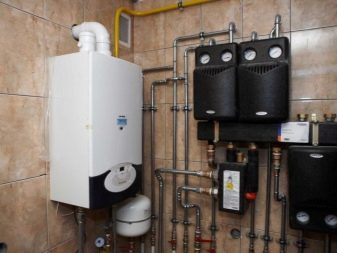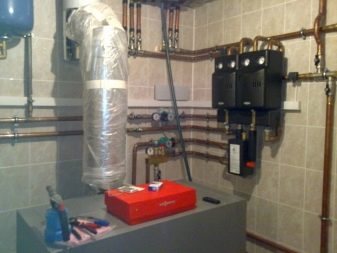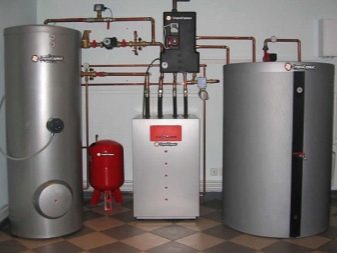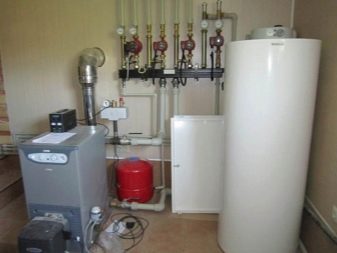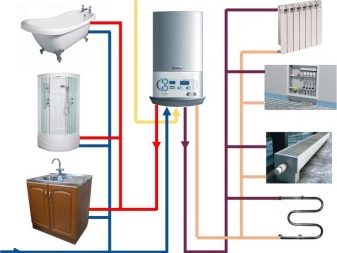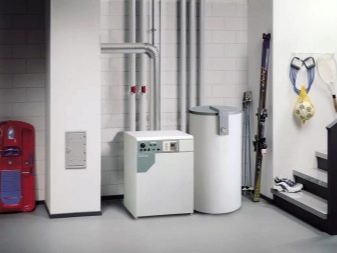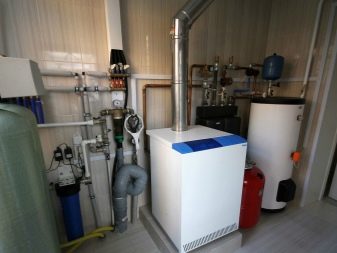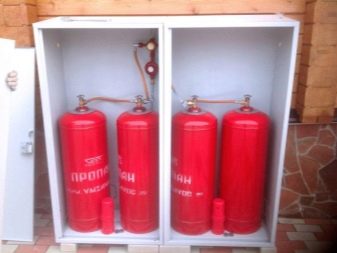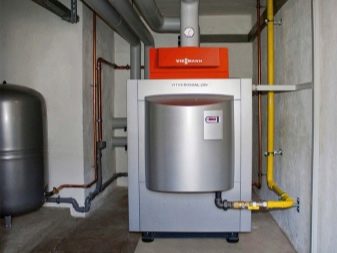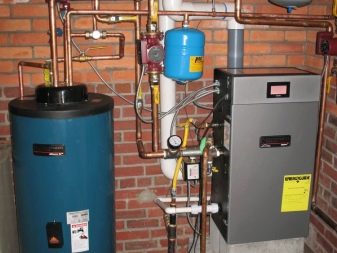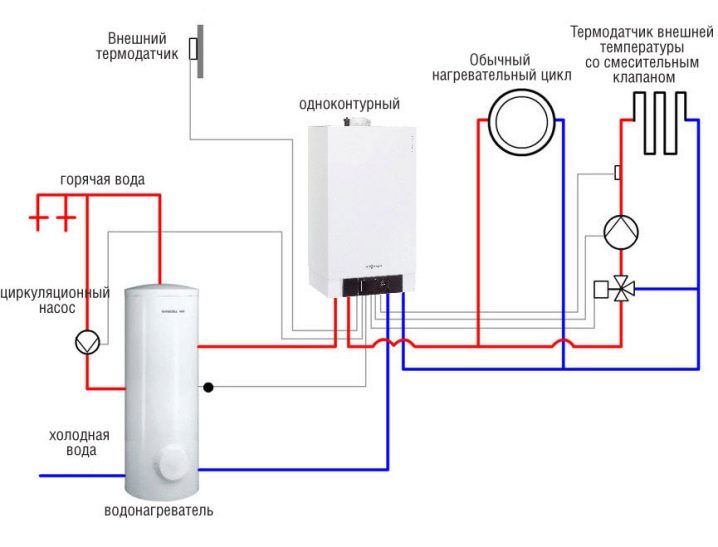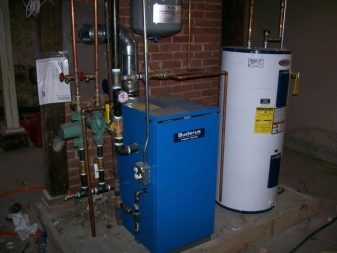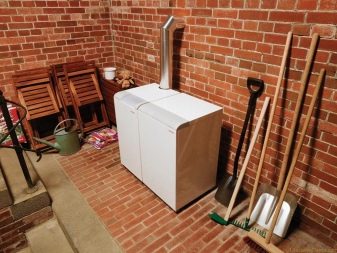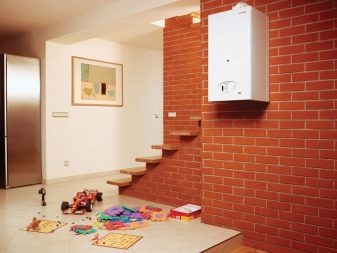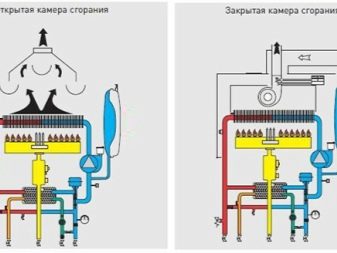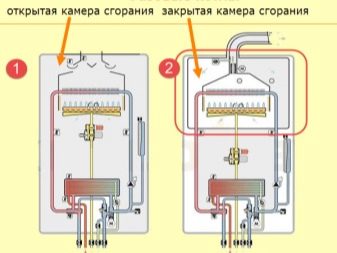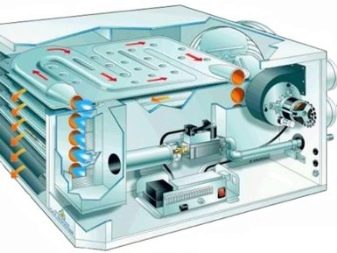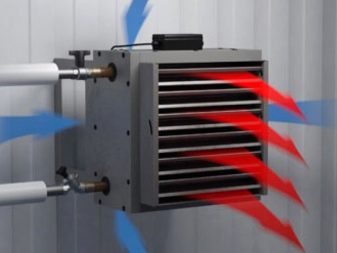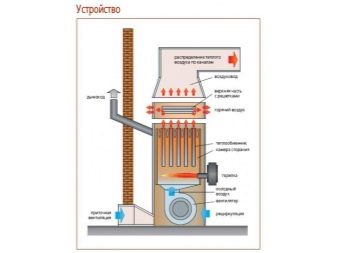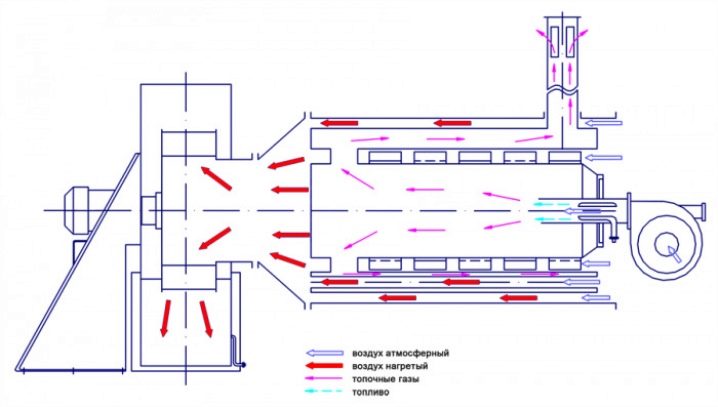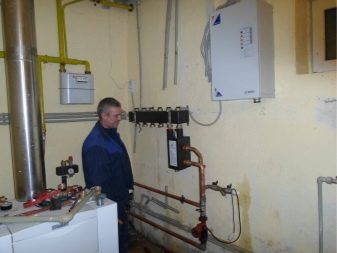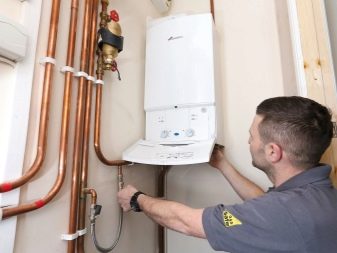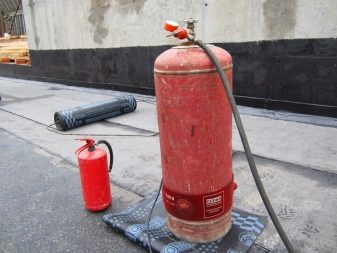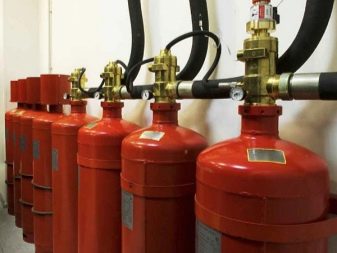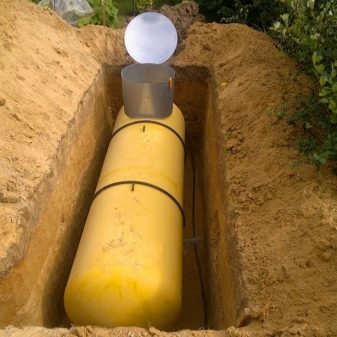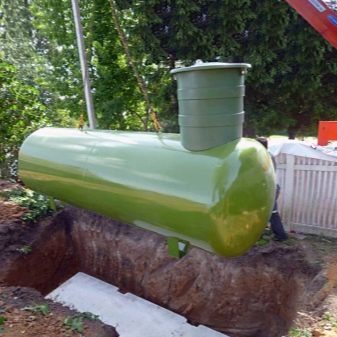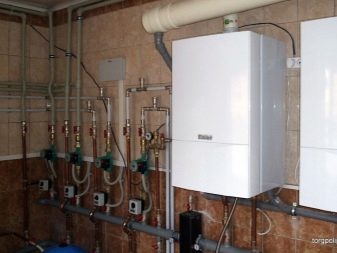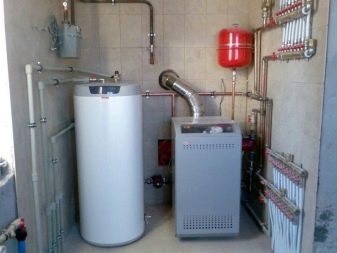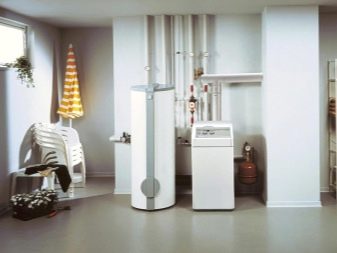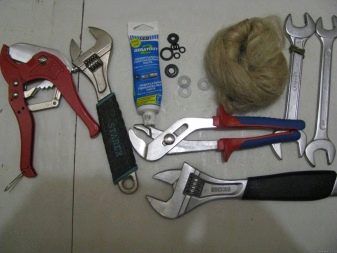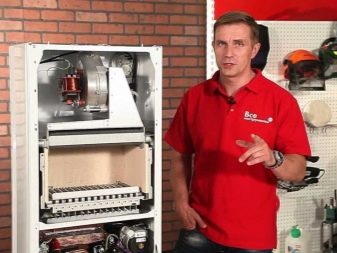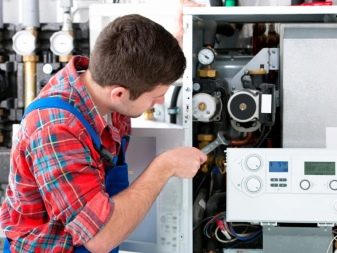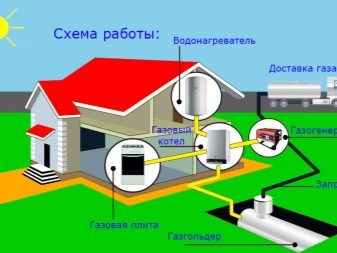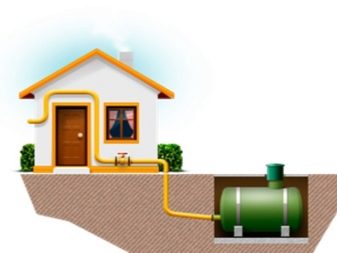Gas heating: equipment selection and installation recommendations
Today, gas heating is the most affordable and common, because it is addressed to most homeowners. Modern boilers that run on gas can boast high efficiency, so their popularity is understandable.
Special features
Any private house, cottage or cottage needs high-quality and efficient heating. Fortunately, today people have a choice, which system is better to choose. Gas heating units are rightfully recognized as the most popular because they do an excellent job with their main task, without causing a serious blow to the owners' wallet. To carry out gas heating in the house, you need to secure the appropriate permits, as well as register the installed system.A distinctive feature of gas heating systems is that they are as easy to use as possible. Many of them are complemented by automatics, thanks to which the unit is controlled without any extra effort.
Heating systems that operate on gas, are different. For example, for a small private country house, ordinary gas cylinders with a capacity of 50 liters would be enough. To ensure that the fuel supply is quite large, several cylinders can be connected to the system at once. Similar options today are more often used on small summer residences than in spacious houses, cottages or apartments. For heating large areas, you can use special tanks made of steel, which store liquefied gas. These items are called gas holders, they are installed in the ground. Such containers, as well as cylinders, can be several at once - they can also be connected to each other.
In addition to the above, there are many other options for gas heating. So, one of the most common is the main gas, which also has its own characteristics.A suitable product must be selected on the basis of the living space, as well as the specific preferences of the owners. As well as modern gas equipment distinguishes safety. For example, if the flame in automatic copies suddenly goes out, then a special sensor will work at the same moment - it will start the ignition system. Thus, the owners do not have to constantly keep the boiler under their control. Today, many manufacturers produce high-quality and durable heating systems. In the market there are both expensive and cheap units - the choice of the ideal option remains only for consumers.
Principle of operation
Some users choose home heating with liquefied gas. This type of fuel is stored in cylinders and gas-holders while under pressure. The pressure in the tanks can be reduced by using a pressure reducer. In addition, for the normal functioning of the equipment, special burners designed for liquefied gas are used. The installation of tanks with liquefied fuel is carried out in the same way as structures connected to common networks.
As for gas boilers, they consist of the following elements:
- burners - in the case of using liquefied gas, special burners are used, sharpened for such fuel; it is this part that supplies gas to the combustion chamber, and the nozzles evenly distribute it there;
- heat exchanger;
- thermostat;
- control devices;
- circulation pump (there are several of them);
- expansion tank;
- pressure gauge;
- thermometer.
The thermostat, which is in the room, all the time measures the temperature of the air. On the basis of need, the three-code valve enters the heating mode. It is at this point that the pump responsible for circulation begins to work. With its use, water moves along the heating circuit. After that, the valve opens, and the ignition burner lights up.
The energy that is generated in the heat exchanger, proceeds to heat the water due to the burning gas. At the same time, such details as a manometer and a thermometer measure the temperature value and pressure of the fluid in the general system. At the moment when the air temperature reaches a suitable value, the circulation pump stops working. After some time, all stages of heating are repeated.Under conditions of constant circulation in the heat exchanger, non-stop heating of the living space is carried out. Heated radiators or batteries with the help of thermal media heat the entire dwelling, transferring heat to the air.
Advantages and disadvantages
Gas-fired heating is found in many homes. The demand for such systems is explained by the impressive list of advantages that are inherent in them. So, the main advantage of such heating systems is that they do not require large operating investments (especially when it comes to main gas). In this case, far behind are the units operating from solid or liquid fuels, not to mention expensive electric devices. If you examine the reviews of homeowners, we can conclude that gas heating has the highest level of thermal comfort. Thus, a heat generator on gas makes it possible to get at a suitable minute a definitely metered volume of heat energy. If there is a properly configured automation in the house, it will be possible to constantly maintain the ideal temperature.
Heating on gas in terms of comfort can only compete withoil and electrical systemsHowever, we must not forget that the latter are much more expensive. Many consumers in gas units are attracted by the fact that they can be made fully automatic. Thus, the owners will have an excellent opportunity to allow the technician to independently monitor the heating process. Here it will only be necessary to set the appropriate mode on the zone thermostats. Of course, sometimes it is better to check the operation of the heating equipment, and also to clean it of dust once a year. Modern heating on gas does not require human intervention, and if it has good automation, then it is permissible to control it remotely, staying in any place where there is Internet access.
Another important advantage of gas systems is that its combustion products leave the house, leaving no traces. In addition, you do not need a separate room for storing fuel. In this case, the heating unit can be installed both in an isolated furnace and in one of the living rooms. Gas heating is eco-friendly. It does not harm the health of residents, because the gas itself does not contain hazardous compounds. Today, not all types of fuel can boast of such quality.Such heating systems can significantly save on utility bills, and these devices can be placed both in a private house and in an apartment located in an apartment building.
Unfortunately, gas heating is not flawless. It has some drawbacks that you definitely need to familiarize yourself with before buying such units. The main disadvantage of such systems is their potential explosion hazard. Of course, when drafting a house heating project, all existing risks are taken into account, therefore, observing all the norms and rules, there will be no negative consequences. The main thing is to forget about the initiative and not to make various changes to the design of the units. It is not recommended to repair them with your own hands, because for this there are certified specialists. Before installation and start-up of gas heating it is very important to conduct a thorough inspection of the pipeline, and this takes an extra time. The pipeline must fully comply with the project, as well as all safety requirements.
Another disadvantage of gas-fired heating is its energy dependence. Most of the current units are electronically controlled, and the heat carrier in the systems is circulated by force with the involvement of the pump. The question is solved by addition in the form of an emergency power system. In this case, you can use a small uninterruptible power supply. Some people for this turn to gasoline or diesel generators, equipped with a launch in automatic mode. With the help of such elements it is also possible to solve some problems associated with lighting in the home.
Installation of such heating systems is recommended to entrust experienced professionals, if the owner does not have the relevant experience and skills. In case of improper installation, such heating can be inefficient and even explosive. This applies not only to the boilers or converters, but also to storage facilities for liquefied gas. For example, an illiterately installed gas tank can trigger a gas leak, and this often leads to truly strange consequences. If the gas pressure in the system decreases or the burner has significant wear, the efficiency will definitely fall.In addition, such problems can lead to soot.
Kinds
Gas heating can be of two types.
- Main gas is eco-friendly and safe. With it, you can build in the home underfloor heating and other similar things. However, the main gas requires mandatory coordination with the relevant authorities.
- Balloon gas can be used with any type of boiler. Experts recommend contacting single-and double-circuit units of the appropriate capacity.
Boiler
Such units are most often used for heating residential areas. It is recommended to install them in separate rooms, however, some models can be placed in living rooms, for example, wall options. In addition, gas-fired boilers must be supplemented with high-quality chimneys. Installing such equipment should be as carefully and correctly as possible - you should not make the slightest mistake, because the boiler operating on gas is considered explosive. Similar units are subdivided into several subspecies.
Single and dual circuit
Single-circuit units can only be used for heating living space.They have only one heat exchanger. Of course, it is possible to connect a boiler to such a boiler so that a hot water supply appears in the dwelling. Most often this equipment is installed if there is no need for hot water in the house or cottage. They are also suitable when there is more than one bathroom with several taps in the dwelling.
The most popular recognized by-units. They have two heat exchangers, which are used both for space heating and water heating.
However, such models have the following disadvantages:
- after opening the tap, you need to wait some time until the water warms up;
- having a similar boiler, it is impossible to use both a shower and a washstand at the same time, since in this case one of the users may encounter too hot or cold liquid;
- Such equipment "does not like" hard water - because of contact with it, the heat exchange element is often covered with scum, which has an extremely negative effect on it.
The double-circuit boilers operating on gas are divided into such types as:
- models having a separate heat exchanger;
- bithermic heat exchanger.
Floor and wall
By way of installation, heating equipment is divided into floor and wall models. The former are more often equipped with heat exchangers made of cast iron or steel, and the latter with copper parts. In the floor products are parts with anti-corrosion treatment. Thanks to her, cast iron equipment can work without problems for up to 50 years. Constructions with a steel heat exchanger are also reliable and sturdy, however, they serve less - 15–20 years. It should be borne in mind that in the search for units of high power should be considered only floor-standing options. Wall mounted boilers are good because they are inexpensive, have modest dimensions and the same modest weight. They can be found not only in private houses, but also in simple city apartments. The disadvantage of wall units is that they are less floor standing, and they are significantly limited in power.
With open and closed camera
Gas boilers are also divided into units with open and closed combustion chambers. For example, some products operate from natural draft, therefore they assume the arrangement of the chimney, while others - from forced, such models are equipped with a pipe with a fan for the removal of gas. Models with a closed chamber are otherwise called turbocharged ones, and variants with a closed chamber are atmospheric.
Heat generator for air heating
Modern heat generators are designed to warm up the coolant.
They consist of the following elements:
- burner;
- fan;
- the combustion chamber;
- heat exchanger;
- air vent.
Such devices have the following positive qualities:
- in such a system, the coolant is an economical and safe air;
- such equipment works very quickly - it can be used to warm up even a large area in a short time;
- all systems in such units are automated;
- with the heat generator, you can significantly save fuel consumption by setting the minimum level of heating;
- such units can also ventilate the living space, and not just warm it up;
- heat generators are not subject to breakage;
- for such units do not need to lay a lot of pipes, as well as to install radiators.
Such devices work as follows:
- cold air, which is present in the room (in some systems - outdoors), is fed into the heating element through a fan;
- then in the combustion chamber there is a process of combustion of the fuel, as a result, heat is generated, warming the air;
- under the action of the heat fan, the heated air moves to the heat exchanger, after which it is distributed through the exhaust system using an air valve.
Such units are also floor and wall. There are also mobile copies, however, they are often addressed in case of emergency and not used for very long.
Ways to Organize
Many owners of private homes are wondering how to properly organize gas heating.
This process consists of several basic steps.
- First, design and approval documentation is prepared and approved. It should be borne in mind that the project should be an experienced specialist - you cannot do this yourself. The quality and further arrangement of gas heating in a private house largely depends on a well-designed project.
- When a heating scheme is drawn up, it is important to stock up on high-quality materials and the same quality equipment. It is recommended to refer to branded units.
- Next, follow the inset of the house system in the pipeline, located on the street.
- Then comes the wiring of gas networks in the inside of a private house,as well as the organization of a separate space for the boiler.
- After that, you can install the gas equipment itself.
- Then you need to fill the heating system with direct heat carrier.
- The first will be a trial run. It is recommended to carry it out with an experienced worker and under high pressure conditions.
- The final stage is the acceptance of the finished system.
If it is decided to heat the dwelling with the use of gas cylinders, then everything is a little simpler.
You must perform the following steps:
- it is necessary to prepare in advance the premises for the use and storage of gas cylinders;
- care must be taken to control equipment;
- then select and install a suitable boiler for bottled gas;
- then you only need to control the intensity of heating of the energy source itself.
As for the system operating from a gasholder, here it is necessary to perform the following actions:
- First, a gas pipeline is assembled from polyethylene pipes, and then conducted to the house before entering, made of metal pipes with a stop valve, as well as with a special bellows-type compensator;
- the pipeline inside is supplemented with heat shut-off valves;
- Before loading the gas tank to its place, a pit is prepared with a pad of sand and gravel on the bottom;
- after that, under the container you need to fill the base of the monolithic type; if it is not made, then over time, the equipment may displace groundwater from the pit;
- After installing the tank, it is usually treated with a special anti-corrosion lubricant;
- after that, you can proceed to the organization of anodic-cathodic protection;
- Then the pipeline is installed and filled with soil.
Selection of equipment and tools
If people will be in the room all the time, then it should be purchased equipment that works constantly. If users periodically visit the living space, then you can get by with convectors or infrared emitters. For rooms that need to be warmed constantly, it is recommended to choose a water heating system that is powered by a gas boiler. Thanks to this solution, the space will always be cozy and comfortable, and if the unit has two circuits, then the room will also have hot water.If you want to buy a small technique that does not require a lot of space, it is better to buy a wall boiler. Outdoor models cost more, and they need more space. As a rule, such units are installed in separate boiler houses.
If you want to buy the most durable and reliable devices, it is better not to find floor-standing options. They last longer than wall products. It is also possible to connect a column to the gas supply system. This practical technique is chosen today by many people who want to save on utility bills. Installation of the column is also worth trusting to professionals. Experts advise to buy only high quality branded equipment, because it will serve its owners for many years and will not cause trouble.
If the appropriate equipment for home heating is selected, the following tools will be needed:
- perforator;
- spanners and wrenches;
- special keys for similar equipment;
- dowel;
- brackets;
- level;
- gas meter;
- wire with plug and 3 conductors;
- ground outlet;
- Voltage regulator;
- water.
Installation Instructions
Installation of such heating equipment can be done by hand.
It is worth considering how to do this on the example of attachments.
- First you need to protect the wall on which the unit will be installed. For this suitable sheet of special refractory material. It is necessary to leave a gap of 4–5 cm between it and the overlap.
- Prepare the unit for installation. Clean the walls of the tubes with water.
- Now it is necessary to install on the tube supplying the liquid, filter and valves.
- It is necessary to mount the chimney. It must fit the boiler in diameter and section. It is recommended to refer to steel cylindrical structures with holes for cleaning.
- Next, you need to check the craving. If it starts to deteriorate, automatics stop the fuel supply.
- It is necessary to carry out a tie-in of the unit into the gas pipeline, while using a steel pipe and sgon. For such work, you must call the gas service officer.
- Connect the unit to electrical power, and then turn on the automatic device that protects the equipment from excessive overloads.
- The first start of heating equipment should also be carried out with the participation of a specialist.
Useful tips
Gas consumption for heating a private house must be correctly calculated. It should be borne in mind that, in fact, heat energy is consumed in smaller volumes than can be obtained after all the calculations. This is explained by the fact that during the heating season the temperature of the air outside changes from plus to minus, which is why the rate of fuel consumption fluctuates. For example, buildings with an area of 100 m² will consume about 500 W / h. To do all the calculations, you can refer to online calculators or special formulas.
Gas heating can be carried out in a wooden house. But here it is necessary to treat fire safety responsibly. To do this, the unit should be mounted only on surfaces that are not subject to ignition. It can be galvanized steel sheets with an asbestos substrate. It should be borne in mind that Gaztekhnadzor requires all copies of the license of the service company. If in the process of work involved various organizations, then licenses will be required for all types of activities.
How to choose equipment for gas heating, see the following video.
